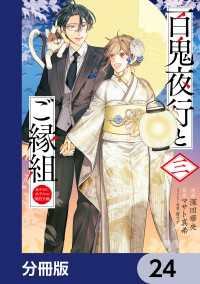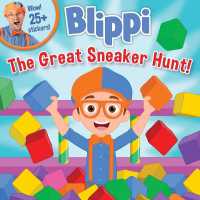Full Description
Unlock the power of storytelling in design with Universal Principles of Storytelling for Designers.
This essential reference explores how timeless storytelling principles—character, conflict, and resolution—can be woven into design and everyday life. It shows how integrating these narrative elements leads to more engaging and meaningful creative outcomes
In Universal Principles of Storytelling for Designers, interdisciplinary designer, innovator, and anthropologist Lyle Sandler covers:
Character Development: How to craft relatable and memorable personas in visual narratives.
Plot Structure: Techniques for creating compelling arcs and engaging storylines.
Emotional Resonance: Leveraging emotions to connect with the audience on a deeper level.
Visual Storytelling: Utilizing design elements like color, typography, and composition to convey meaning and enhance the narrative.
The book is rich with examples from various disciplines, including literature, film, psychology, philosophy, and theatre. Sandler's expertise and accessible writing style make complex concepts easy to understand and apply.
Universal Principles of Storytelling for Designers is not just another design book; it's The Science of Storytelling for designers, a guide to transforming your design work into unforgettable stories. By mastering these storytelling principles, you can create designs that not only look good but also resonate deeply with your audience.
The titles in the Rockport Universal series offer comprehensive and authoritative information and edifying and inspiring visual examples on multidisciplinary subjects for designers, architects, engineers, students, and anyone who is interested in expanding and enriching their design knowledge.
Contents
Introduction
1 Affect as Information Theory
Emotion provides an important source of information for decision-making.
2 Allegory
A narrative that expresses an alternative or hidden meaning.
3 Analogy (Design by Analogy, DbA)
The comparison between two things for the purpose of explanation or clarification.
4 Anthropomorphism
The application of human characteristics to nonhuman entities.
5 Archetypes
Universal patterns recognizable to all human beings.
6 Aspiration
The desire or ambition to achieve something.
7 Calls to Action
An invitation for an audience to act.
8 Ceremonies and Rituals
The way humans practice and observe their customs, both formally and informally.
9 Character Relatability
An audience's ability to relate and draw a connection to characters in a story.
10 Choreography
The movement and sequencing of events, people, products, services, and experiences.
11 Conflict
The friction between two opposing forces.
12 Contrast, Beginning to End
A distinct otherness must exist between the beginning and end of your story.
13. Core Values
Embedded principles and beliefs that guide actions and behaviors.
14 Creativity
Using one's imagination to create original ideas.
15 Data Storytelling
Renders data into a consumable and actionable narrative.
16 Deceptive Cadence
An effective and dramatic way of adding surprise to your story.
17 Deductions
The human technology that enables decision-making.
18 Deus ex Machina
The resolution of a hopeless or unexpected situation by a divine or miraculous power.
19 Dieter Rams' Principles of Design
Ten principles for good design and great storytelling.
20 Disney's Twelve Basic Principles of Animation
Fundamental principles of animated storytelling and character design.
Dramaturgy
The theory and practice of dramatic composition.
22 Emotion
The instinctive responses to external stimuli.
23 Empathy
The ability to understand the feelings and needs of others.
24 Epigraph
A brief phrase, quotation, or poem that acts as a preface to a story.
25 Essence Model
The basic nature of a thing—the quality or qualities that make a thing what it is.
26 Ethics
The standards that express what is right and what is wrong.
27 Exposition
An introduction to a story's critical background information.
28 Foreshadowing
A warning or indication that something is about to happen.
29 Form and Function
Appearance and utility must be in balance.
30 Freytag's Pyramid
A multistage guide to dramatic structure.
31 Functions of Storytelling
The multiple functions and forms of storytelling.
32 Gestalt
The whole of something is greater than the sum of its parts.
33 Happily Ever After
The end of a story, assuming stories ever end.
34 Hitchcock's Rules of Visual Storytelling
Three rules to live by when telling visual stories.
35 Hofstede's Cultural Dimensions Theory
A guide to cultural similarities and differences.
36 Human Technology
Our inborn abilities that allow us to function organically.
37 Hyperbole
Exaggerating the mundane.
38 In Medias Res
A story that begins in the middle or end, not the beginning.
39 Infrathin
A feeling that is so small it is barely perceptible.
40 Jekyll and Hyde Syndrome
Two distinctly different characteristics residing in the same organism.
41 Jobs to Be Done
A schema that offers a perspective on why people buy or hire products, services, and experiences.
42 Kano and Storytelling
Determines the correlation between product features and customer satisfaction.
43 Kill Your Darlings
The willing removal of content and features that do not support the value of your story or design.
44 Kishōtenketsu
A classical narrative structure originating from Chinese, Korean, and Japanese cultures.
45 Lexicon
An upscale way of saying a list of words.
46 Mary's Room
An intriguing and important thought experiment.
47 Maslow's Hierarchy of Needs
Five fundamental levels of human need.
48 Master Planning
Every city is a story.
49 Meaning versus Value
Every story should include elements of meaning, value, or both.
50 Mentalese
Our innermost narratives.
51 Metaphors
A figure of speech or expression.
52 Mise en Scène
Putting onto the stage | Setting of the scene | Look of the scene
53 Mission/Vision/Value Statements
Short stories that explain what is, what will be, and the value you bring.
54 Music
A metaphor for harmonious storytelling.
55 Narrative Design
A text-based description of your design's experience.
56 Narrative Intelligence
The ability to listen, understand, and analyze narratives.
57 Narrative Transportation
The experience of being fully immersed in a story.
58 Observing
Watching humans being.
59 Performance
The telling of a story.
60 Personas
The fictional representation of real humans.
61 Phenomenology
The exploration of phenomena and human experience.
62 Pixar's Story Structure
Eight steps to exceptional storytelling.
63 Plot
The sequence of events that keeps a story in motion.
64 Presentations
The conveyance of information from one person to another or group.
65 Prototyping
The sample or model of something yet-tobe- developed.
66 Proximity
The relationship between characters, things, and places.
67 Resource-Based Theory (Marketing)
The story of intangibles that are irreplaceable.
68 Rhythm and Silence
The pace and sequencing of a story.
69 Rule of Three
Items grouped in three are always more memorable.
70 Sensemaking
Making sense of things.
71 Seven Basic Plots
The seminal list of familiar plots.
72 Seven-Point Story Structure
An alternative use for this long-standing narrative structure.
73 Show, Don't Tell
An immersive storytelling technique.
74 Star Trek
The influence of fiction on nonfiction and vice versa.
75 Stickiness
When something becomes contagious, memorable, and hard to forget.
76 Stimulus, Organism, Response Theory (S-O-R)
Stimulus drives organisms (humans) to evaluate and respond.
77 Stream of Consciousness
The natural and continuous flow of ideas, thoughts, feelings, and reactions within a narrative.
78 Super Normal
Beauty often exists in what is not present.
79 Synaptic Pruning
The human brain has limited capacity.
80 Synecdoche
A figure of speech in which a part is made to represent the whole or vice versa.
81 The Fichtean Curve
A story structure that focuses on conflict and crisis.
82 The Five Ps
Product, Price, Promotion, Place, and People.
83 The Hero's Journey
The archetypal narrative pattern that traverses time, culture, and religion.
84 The MacGuffin
An object or device that serves as a trigger for the plot but is otherwise useless.
85 The Paradox of Suspense
When a suspenseful story remains compelling despite its familiarity.
86 The Peak End Rule
Our memory is affected around the most intense moments and the end of an experience.
87 The Senses
How humans interact and perceive the world around us.
88 The Trigger or Wicked Problem
The reasons we tell stories and design things - the why behind the what.
89 The Wall
The imaginary wall that sits between the teller of a story and their audience.
90 The Willing Suspension of Disbelief
Suspending one's capacity for critical and logical thinking to temporarily believe in something that appears too extraordinary to be real.
91 Theodore Levitt and the Quarter-Inch Hole
The quarter-inch hole is one of the greatest, yet simplest, marketing theories.
92 Thesis + Antithesis = Synthesis
A point, followed by an alternative point, followed by a solution.
93 Three Act Structure
The simplest structure of a story.
94 Tone and Tenor
Describing the overall attitude, mood, and depth of a story or design.
95 Transformation
Stories have two jobs: to prompt transformation and to provoke action.
96 Verisimilitude
The appearance of being true.
97 Vonnegut's Shapes of Stories
Kurt Vonnegut's simple yet effective story structure.
98 Vulnerability
Exposing one's emotions or weaknesses.
99 Work Backwards
Begin writing your story from the ending.
100 World-Building
The world your humans, designs, and environments live in.
Acknowledgments
About the Designers
About the Author
Index
-

- 電子書籍
- 百鬼夜行とご縁組 あやかしホテルの契約…
-

- 電子書籍
- 最強の野菜スープ40人の証言 新装版
-

- 電子書籍
- 氷の城壁【タテヨミ】 31 マーガレッ…
-

- 電子書籍
- 名医がすすめる最強の食事術 “一生健康…




